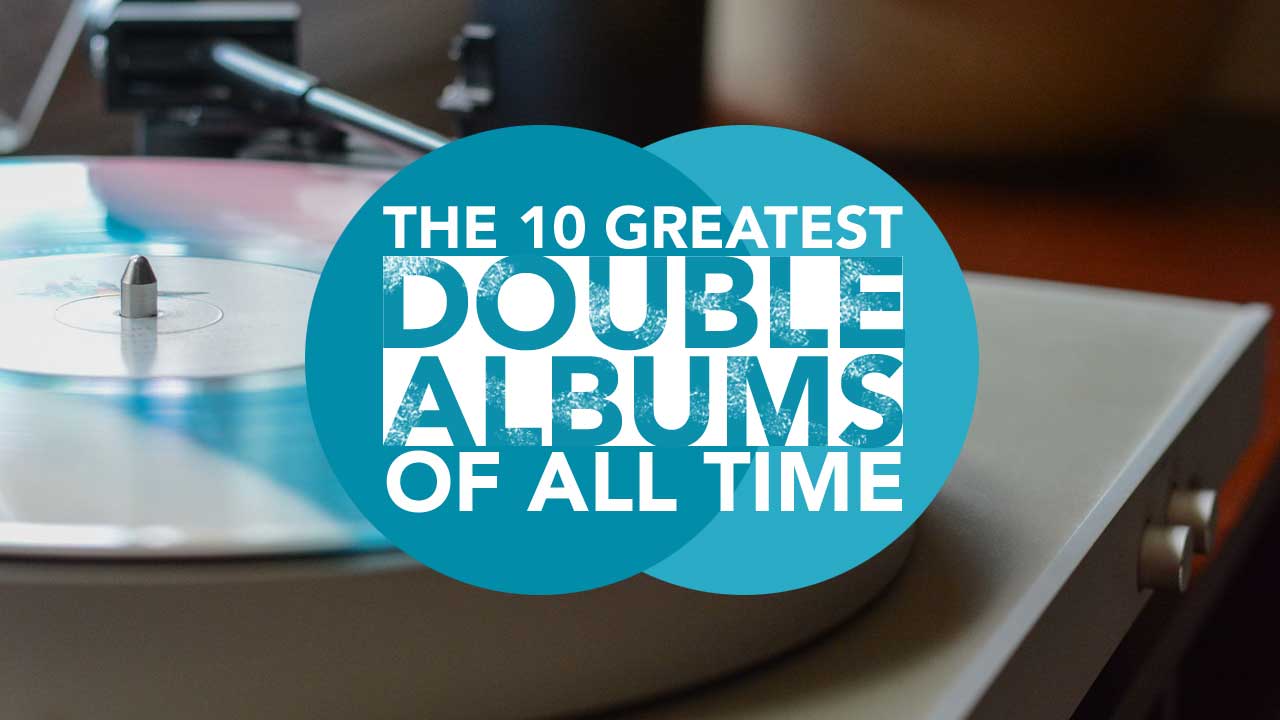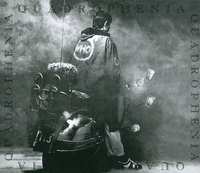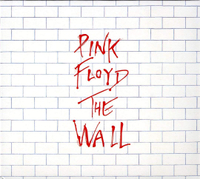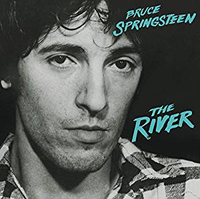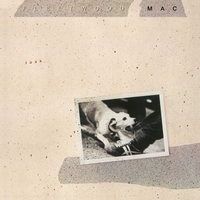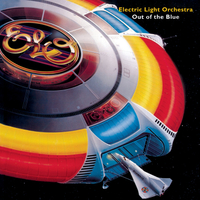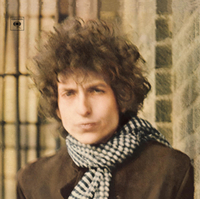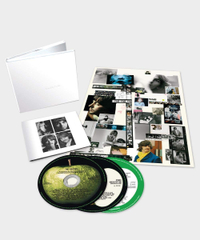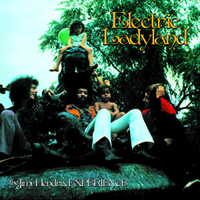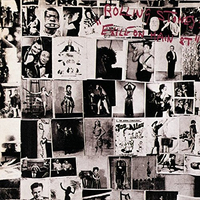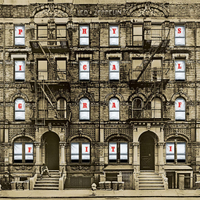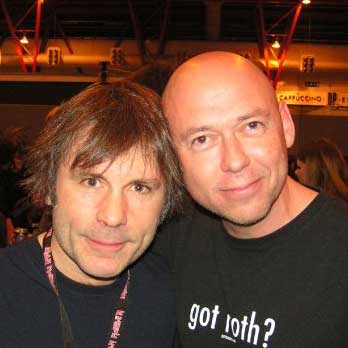In Iron Maiden’s long career there have been several double live albums, beginning with the 1985 classic Live After Death. But The Book Of Souls was the band’s first double album of original studio material – a grand and bold artistic statement delivered in an era when the album as an art form has been denigrated by streaming and downloading.
It wasn’t always this way. From the late 60s through to the late 80s, some of the greatest and most influential albums ever made were doubles, created by artists of every kind. There was progressive rock in The Lamb Lies Down On Broadway by Genesis and Tales From Topographic Oceans by Yes; soul and funk in Stevie Wonder’s Songs In The Key Of Life and two classic doubles by Prince, 1999 and Sign ‘O’ The Times; punk rock in London Calling by The Clash.
Elvis Presley made a comeback in 1969 with a brilliant double album, The Memphis Record. And in 1992, a young rock band had the balls to make their debut a double – the Manic Street Preachers, with Generation Terrorists.
There have even been, on rare occasions, triple albums, such as George Harrison’s All Things Must Pass and The Clash’s Sandinista!. But it’s the double album that we’re celebrating here.
The rules are simple. No anthologies, no live albums, and no Red Hot Chili Peppers, despite the claims of Classic Rock’s Dave Everley that the Chilis’ Stadium Arcadium is a masterpiece.
And so, here they are: The 10 Best Double Albums In Rock…

10. The Who – Quadrophenia (1973)
Not for nothing were they known as The ’Orrible ’Oo. They were one of the loudest bands on Earth, deafening and bludgeoning their audiences into submission. They were the quintessential lads’ band. And their drummer was a wildman that would make the antics of Ozzy Osbourne seem tame by comparison. And yet The Who’s two most famous records were high-minded art concepts: the double album rock operas Tommy and Quadrophenia.
Tommy had great moments amid the conceptual claptrap – brilliant songs including I’m Free and Pinball Wizard. But better by some distance was Quadrophenia, the story of a young mod named Jimmy, written by Pete Townshend in memory of the swinging London scene from which The Who had sprung. The Real Me has what is surely the greatest bass playing ever featured in a rock song. 5:15 is one of the quintessential wasted-youth anthems. And the grand finale, Love Reign O’er Me, is an emotional tour de force.
9. Pink Floyd – The Wall (1980)
No world famous rock star has ever bared his soul to the extent that Roger Waters did with The Wall. Famously inspired by an incident at a Pink Floyd concert at Montreal’s Olympic Stadium in 1977 – when Waters was so pissed off by rowdy fans that he spat at one of them – The Wall was his meditation on the cultural, physical and spiritual divide between band and audience. Fuelling his sense of isolation was the pain of losing his father at a young age, and his long-held antagonism towards figures of authority.
To get all of that out, it required a double album. And with producer Bob Ezrin his key collaborator in building a narrative around a character named Pink, Waters created this semi-autobiographical existentialist rock opera: a study in alienation which, ironically, became one of the biggest albums of all time. Another Brick In The Wall (Part 2) was a number one single in the UK, and Comfortably Numb – with David Gilmour singing lead and playing his greatest guitar solo – became a classic rock standard.
8. Bruce Springsteen – The River (1980)
In the 70s, Springsteen had built his reputation on giving everything he had in his music – be it the overblown drama of his breakthrough album Born To Run, or the powerful intensity of its follow-up Darkness On The Edge Of Town. At the start of a new decade, he delivered an even bigger statement with The River. “Originally it was a single record,” Springsteen said. “I handed it in with just one record and I took it back because it I didn’t feel it was big enough.” This double album was a balancing act. Springsteen wanted to retain the character-driven songs of Darkness On The Edge Of Town, but also to add more of the kind of high-energy rock’n’roll that, in his words, “made our live shows so much fun”.
As a result, The River had a bunch of straight-shooting rock songs built for the stage: The Ties That Bind, Out In The Street, Cadillac Ranch, Ramrod. There was also, in Hungry Heart, his first US top ten single. But it was the darker stuff that gave The River its real depth. “It was a record made during a recession,” Springsteen said. “A record where I first started to tackle men and women and families and marriage.” And these were the themes in some of the greatest songs he ever wrote: Point Blank, Independence Day, Stolen Car, and most powerful of all, this album’s title track.
7. Fleetwood Mac – Tusk (1979)
They could never top Rumours – the hit-packed, multi-million selling phenomenon. But on this follow-up, the Mac combined their trademark soft rock with a new wave edge inspired by guitarist Lindsey Buckingham’s leftfield instincts. The album’s first single was a curveball – the kooky title track, with its tribal rhythms, parping brass section and chanted chorus. Stevie Nicks’ beautiful song Sara was the big hit. Buckingham’s weird genius is best illustrated in the frantic That’s Enough For Me.
6. Electric Light Orchestra – Out Of The Blue (1977)
For all the hot air about punk rock in 1977, the British charts were dominated by Saturday Night Fever, Mull Of Kintyre and Out Of The Blue. ELO’s leader Jeff Lynne – a beardy Beatles fan, about to turn 30 – was precisely the kind of boring old fart the punks had come to bury. He was also suffering from writer’s block when he began working on this album at a Swiss mountain retreat, where it pissed down for two weeks solid. But as he recalled: “One day I got up and the sun was shining, all the mountains were lit up, and I came up with Mr. Blue Sky.”
From there, Lynne created his magnum opus. Out Of The Blue is full of great songs – Turn To Stone, Wild West Hero, Steppin’ Out, Sweet Is The Night. Its crowning glory is the brilliantly realized 18-minute, four-song Concerto For A Rainy Day, ending with that wonderful song that come to Lynne on that sunny morning.
5. Bob Dylan – Blonde On Blonde (1966)
Widely acknowledged as the first studio double LP by a major artist, Blonde On Blonde is one of the defining records of the 60s and of Dylan’s career. It was, Dylan said, “the closest I ever got to the sound I hear in my head” – something he described with a typically poetic turn of phrase, “that wild-mercury sound.”
With this album, Dylan completed a transition from folk to rock artist, a journey begun on his two albums from 1965, Bringing It All Back Home and Highway 61 Revisited. Save for one track, the whole of Blonde On Blonde was recorded in just seven days spread over two sessions in Nashville, with Dylan backed by a loose ensemble of high-class musicians including keyboard players Al Kooper and guitarist Robbie Robertson.
And among the 14 songs are a number of era-defining classics: I Want You, Just Like A Woman, Leopard-Skin Pill-Box Hat and the stoner anthem Rainy Day Women #12 & 35.
4. The Beatles – The Beatles (1968)
No album in the history of rock’n’roll has been so horribly tainted as the one universally known as The White Album. For almost fifty years it has been inextricably linked to the murders committed in 1969 by the followers of Charles Manson, the lunatic cult leader who had interpreted songs from the album, such as Helter Skelter and Piggies, as signs of an impending race war. It was American comedian Sam Kinison, on his 1986 album Louder Than Hell, who really nailed the fundamental truth about Manson and The White Album: “It’s a fucking album!” Kinison yelled. “You were on acid, Manson! You’d have got the same message out of The Monkess, you fucking dickhead!”
For anyone of sane mind, The White Album is simply a great record. The Beatles had begun to unravel while making it: the continual presence of Yoko Ono with John Lennon adding to the strain between him and Paul McCartney. At one point during the recording, Ringo Starr left the group. And yet, from this chaos, they pulled together four sides of brilliant and inventive music. There was some rubbish: the bizarre Revolution 9, the daft Rocky Raccoon. But at the core of the album were some of the greatest of all Beatles songs: Lennon’s Dear Prudence and Happiness Is A Warm Gun; McCartney’s Blackbird, Mother Nature’s Son and Helter Skelter; George Harrison’s While My Guitar Gently Weeps; and perhaps the best thing Ringo ever wrote, Good Night.
3. The Jimi Hendrix Experience – Electric Ladyland (1968)
Hendrix revolutionised rock music in 1967 with his debut album Are You Experienced?. Later that same year, he blew minds again with the cosmic Axis: Bold As Love. But it was on Electric Ladyland, released in ’68, that the greatest guitar player of all time rose to his artistic peak. The double album format allowed him room for extended, far-out improvisational jams such as the 15-minute Voodoo Child and the 13-minute trip 1983 (A Merman I Should Turn To Be).
There is also his grooviest song, Crosstown Traffic; one of his most beautiful, Burning Of The Midnight Lamp; and best of all, a version of Dylan’s All Along The Watchtower – so much better than the original, and so radically different, it was like Jimi had, in the words of one critic, taken the song “to Venus and back”.
2. The Rolling Stones – Exile On Main St. (1972)
There is no other Stones album – arguably, no other rock’n’roll album – for which the story of its creation is so steeped in folklore and mystique. Although some tracks were recorded in London and Los Angeles, it was during sessions at Nellcote, a villa in the south of France, that the mythology of Exile On Main St. was born.
In the summer of 1971, in the villa’s basement, the band worked the graveyard shift, led by a strung-out Keith Richards and entertaining similarly inclined visitors including William Burroughs and Gram Parsons. An air of decadence seeped into the music, the loose grooves and heady atmospherics. Rocks Off set the tone, with Keith and Mick Jagger harmonizing on the immortal line: “The sunshine bores the daylights outta me.”
And the great songs keep coming: Tumbling Dice, Loving Cup, Torn And Frayed, Keef’s signature Happy, All Down The Line and the soulful ballads Let It Loose and Shine A Light. It’s all as gloriously messed up as any rock’n’roll band has ever sounded.
1. Led Zeppelin – Physical Graffiti (1975)
From the greatest rock band of them all, the greatest double album. Led Zeppelin albums were always beautifully crafted, and never more so than on Physical Graffiti, wherein new songs were blended with archive material into a seamless whole that perfectly illustrated the breadth and depth of Zeppelin’s music. As Jimmy Page said of Physical Graffiti: “It gives all the different colours and textures. Like all of our albums, it was it important that it was exactly how it was.”
Fittingly, the band’s most epic album includes their most epic track, Kashmir, and other huge pieces such as In My Time Of Dying and In The Light. And from the vaults, Page pulled out a number of brilliant tracks that hadn’t made the cut on previous records: outtakes from Led Zeppelin IV in Night Flight and Boogie With Stu, the latter named after guest star and “sixth Rolling Stone” Ian Stewart; and from the Houses Of The Holy sessions, that album’s ‘lost’ title track and the rustic Black Country Woman, recorded al fresco with the sound of a plane flying overhead.
The scope of Physical Graffiti is vast, from the crunching hard rock of Custard Pie through to the Stevie Wonder-inspired funk of Trampled Under Foot and the beautiful acoustic folk stylings of Bon-Yr-Aur, and on to Kashmir. Ultimately, Led Zeppelin IV is the band’s definitive album, but Physical Graffiti might just be their best.
Get the Louder Newsletter
The latest news, features and interviews direct to your inbox, from the global home of alternative music.
